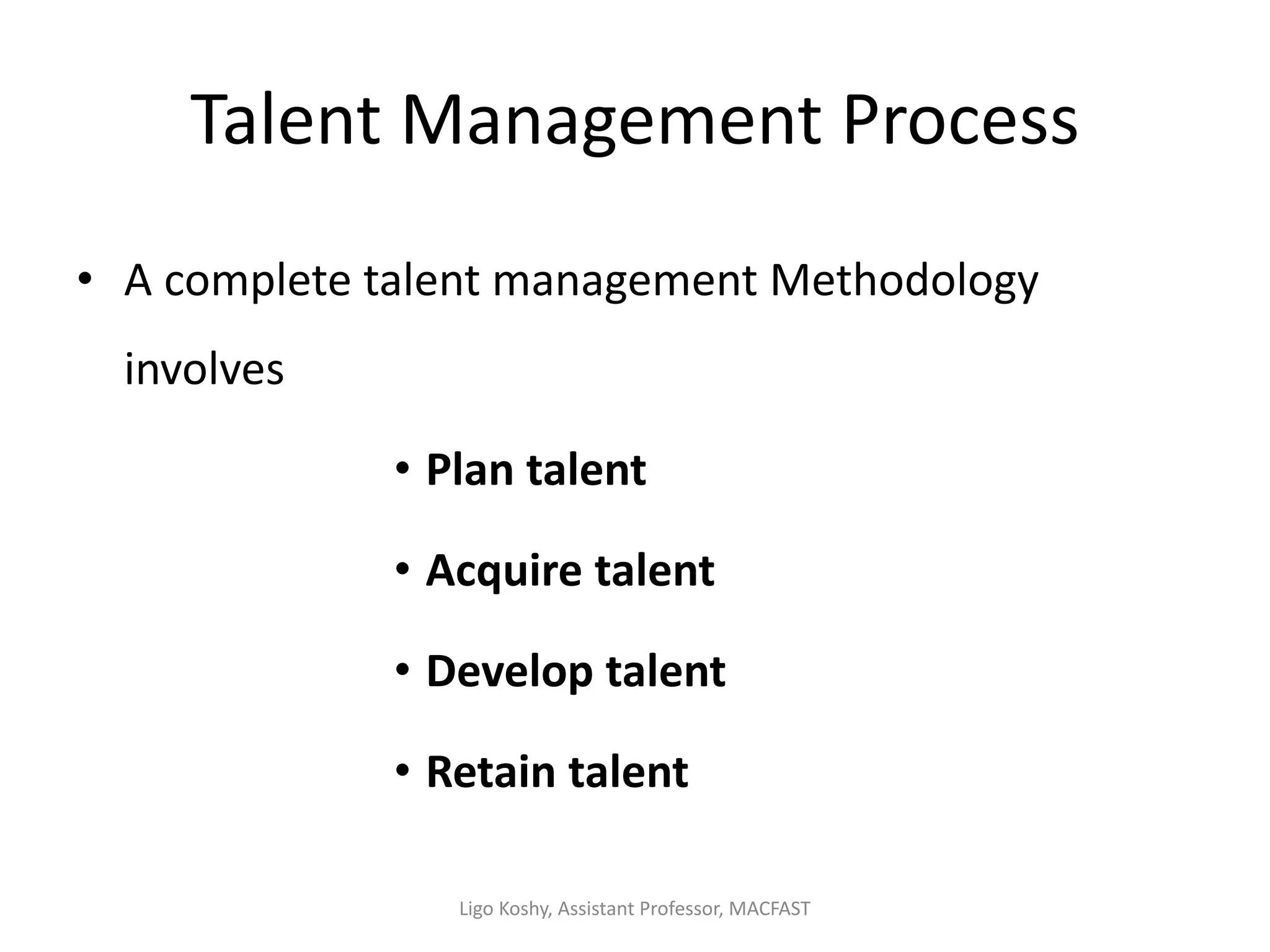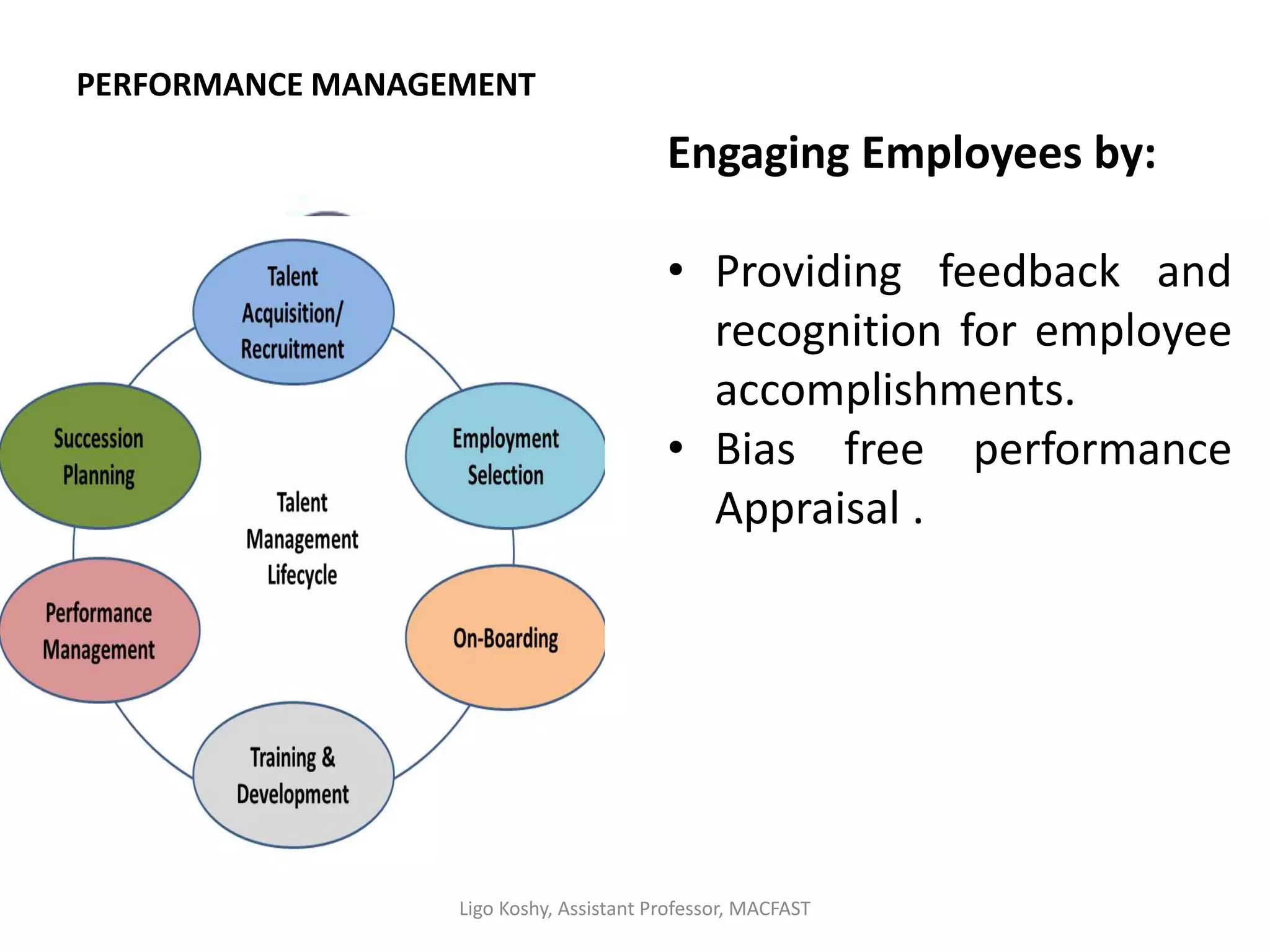Talent management refers to anticipating an organization's human capital needs and planning to meet those needs. It involves attracting, selecting, developing, and retaining skilled employees. The key aspects of talent management include talent planning, acquiring talent through attracting and selecting, developing talent through training and career development, and retaining talent with competitive pay and benefits. Talent management benefits both employees through career growth and job satisfaction, and organizations by enhancing productivity and retaining top talent.


















